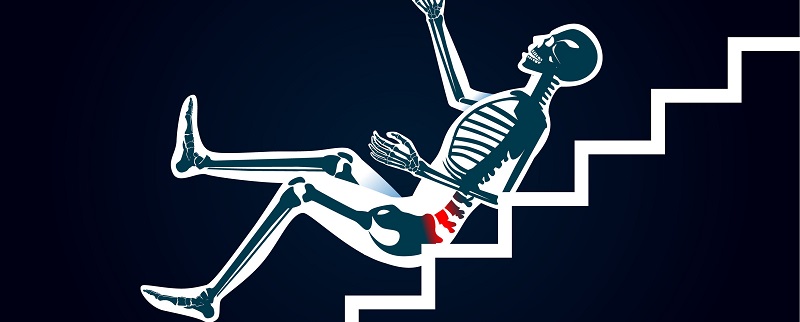How To Care For A Fractured Tailbone
Category: Spinal Cord Injury | Author: Stefano Sinicropi

Your tailbone (coccyx) is located at the bottom of your spine, and injuries to this area commonly occur when you fall while in a seated position. In Minnesota where many of our roads and sidewalks are covered with ice for a few months of the year, it’s not uncommon for spine specialists to see an uptick in patients who are dealing with a fractured tailbone due to slipping and falling on their butt. Today, we take a closer look at how to care for tailbone fractures.
Bruised or Broken Tailbone
Tailbone injuries are very similar to another common injury you’ve probably suffered at one time in your life – the dreaded stubbed toe. When you stub your toe, you’re in a lot of pain right after the injury, and then pain dulls a bit but still tends to linger. The same pain symptoms are felt with tailbone injuries. Similarly, just like when you stub your toe, it really doesn’t matter if you bruise or break a bone, because treatment is oftentimes identical.
Now, that’s not to say you should just assume fractured tailbones will heal fine on their own. Sometimes these bones can shift, and if they don’t heal in the right position, you can have lasting pain or remain prone to re-injury. Most people can tell the difference between a broken tailbone and a bruised tailbone after a couple of days. If pain has decreased and you’re less bothered by the injury after 48-72 hours, it’s probably just a bruise. If pain remains sharp after a few days or has worsened, you may have suffered a fracture and should consider having it looked at by a spine specialist to ensure it hasn’t shifted too far out of place.
Treating Fractured Tailbones
As we mentioned above, the treatment options for bruised and fractured tailbones are usually the same, but the good news is that the vast majority of these injuries heal without the need for surgery. Treatment focuses on staying off of the injury and icing the area to keep swelling at a minimum. Your doctor may tell you to invest in a donut seat or to avoid sitting on hard wooden surfaces if at all possible. Anti-inflammatory and pain relieving medications are also useful depending upon your symptoms.
In the rare event that your fractured tailbone is not responding after weeks of conservative care, your doctor may order imaging tests to determine if something else is going on or if surgery could help with the issue. Surgery typically involves repositioning and stabilizing the fractured coccyx so that healing can run its course, or removing part of the bone altogether. Surgery has high success rates, but as we noted above, is rarely needed to resolve a fractured tailbone.